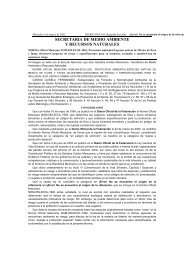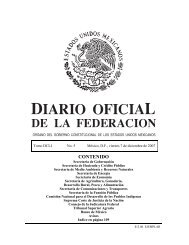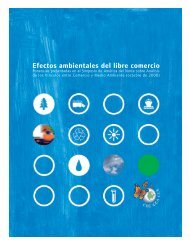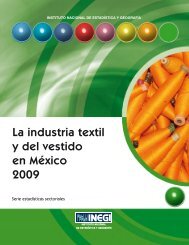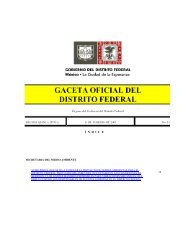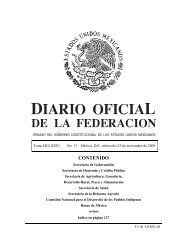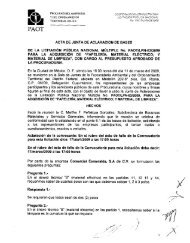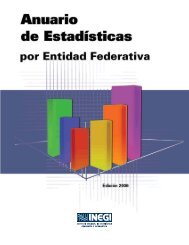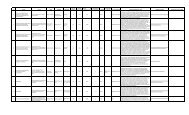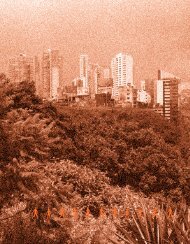7. Aprovechamiento de la vida silvestre - PAOT
7. Aprovechamiento de la vida silvestre - PAOT
7. Aprovechamiento de la vida silvestre - PAOT
Create successful ePaper yourself
Turn your PDF publications into a flip-book with our unique Google optimized e-Paper software.
Mapa <strong>7.</strong>8. Intensidad <strong>de</strong> extracción <strong>de</strong> productos forestales no ma<strong>de</strong>rables, 1997- 2000.La intensidad se midió<br />
como el volumen extraído en promedio por año y por unidad <strong>de</strong> superficie. No se incluye <strong>la</strong> tierra <strong>de</strong> monte.<br />
3<br />
Extracción (kg/km/año)<br />
0–20<br />
20–40<br />
40–80<br />
80 – 160<br />
W<br />
N<br />
S<br />
E<br />
160 – 320<br />
320 – 640<br />
640 – 1 280<br />
1 280 – 2 560<br />
Más <strong>de</strong> 2 560<br />
250 500 1 000<br />
Kilómetros<br />
FuenteSemarnat<br />
: , Subsecretaría <strong>de</strong> Gestión para <strong>la</strong> Protección Ambiental, Dirección General <strong>de</strong> Fe<strong>de</strong>ralización y Descentralización <strong>de</strong> Servicios Forestales y <strong>de</strong> Suelo. México.<br />
2002.<br />
Figura <strong>7.</strong>13. Especies aprovechadas o con<br />
potencial <strong>de</strong> aprovechamiento por región<br />
ecogeográfica. Las especies comerciales son aquel<strong>la</strong>s que<br />
penetran en el mercado nacional, mientras que otras sólo son<br />
conocidas y empleadas regionalmente. Entre un 1 y 5% <strong>de</strong> <strong>la</strong>s<br />
especies con potencial <strong>de</strong> aprovechamiento son empleadas. Nótese<br />
<strong>la</strong> esca<strong>la</strong> <strong>de</strong> <strong>la</strong> gráfica.<br />
Número <strong>de</strong> especies<br />
10 000<br />
1 000<br />
100<br />
10<br />
1<br />
Potenciales<br />
Selvas Bosques Zonas<br />
áridas<br />
Vegetación<br />
Usadas<br />
regionalmente<br />
Comerciales<br />
Fuentes: Semarnap. Programa Estratégico. México. 199<strong>7.</strong><br />
Conabio. La diversidad biológica <strong>de</strong> México: estudio <strong>de</strong> país. México.<br />
1998.<br />
Figura <strong>7.</strong>14. Evolución temporal <strong>de</strong> <strong>la</strong> producción<br />
forestal no ma<strong>de</strong>rable. Se muestran por separado los<br />
productos tradicionalmente incluidos en este rubro y <strong>la</strong><br />
tierra <strong>de</strong> monte.<br />
Producción forestal no ma<strong>de</strong>rable (miles <strong>de</strong> tone<strong>la</strong>das)<br />
180<br />
135<br />
90<br />
45<br />
90<br />
60<br />
30<br />
0<br />
1997 1998 1999 2000<br />
Año<br />
Tierra <strong>de</strong> monte<br />
Ceras y gomas<br />
Fibras Resinas Otros<br />
Fuente: Semarnat, Subsecretaría <strong>de</strong> Gestión para <strong>la</strong> Protección Ambiental,<br />
Dirección General <strong>de</strong> Fe<strong>de</strong>ralización y Descentralización <strong>de</strong> Servicios Forestales y<br />
224



